HIStalk Practice Interviews Wyche T. Green, III, President and CEO, Greenway Medical Technologies
Wyche T. Green, III (“Tee”) is president and CEO of Greenway Medical Technologies of Carrollton, GA.
Tell me about yourself and the company.
Greenway is passionate about creating a smarter healthcare system; a system that embraces the electronification that is taking place today in which the provider and the consumer can thrive and that eventually leads to improving population health. The current healthcare system is closed and not very innovative. I believe it’s changing and I think about the day when data captured on each one of us in a smarter system will actually assist in improving the care we receive and the care that the next generation will receive.
We’re building platforms that enable providers to embrace electronification, embrace the consumer, and begin this quest of improving population health.
I have never considered our company as strictly an electronic health record company. It just happens to be a component of what we do. We provide ambulatory solutions that connect to enterprises and hospital systems. You will see very soon that components we offer such as PrimeEXCHANGE around interoperability, the communication portal PrimePATIENT and the data intelligence within PrimeDATACLOUD alone can service communities of health in their own right to solve community issues that may or may not utilize the core of our PrimeSUITE EHR. If you think about the struggles of the establishment of HIEs, PrimeEXCHANGE currently supports more than 5,000 connections allowing widespread provider access to ride a platform that can exchange with systems like Epic, Cerner, and Relay Health, and more than 600 hospitals, labs, HIEs, and registries.
The collective power of these platforms and solutions enable physicians, leaders and patients – in communities large and small – to create a smarter healthcare system where everyone benefits. As healthcare rapidly evolves, our culture is committed to providing these powerful tools to successfully navigate change. As the healthcare system realizes our common goal of unlocking, assessing, sharing and applying decision-making information, population health will certainly improve. That’s what we stand for.
We started the company in 1998 in Carrollton, Georgia where we remain headquartered today. We have grown from a closely-held investor base to trading as a public company listed on the NYSE. A lot has changed over the last decade but our mission and passion to create a smarter healthcare system endures.
Who are your most direct competitors and what factors are causing them to increase or decrease in influence?
For me, for Greenway, it’s changed. I think it is shortsighted to consider that your competitors come from within your direct market. We’re pushing for significant and meaningful change in how we manage healthcare, but sometimes there are forces that impede or slow that change. Today, the industry is faced with an economic issue with how we pay for healthcare services.
We are moving from production medicine to value or outcomes-based medicine. Innovation is playing a major role in that transformation. Greenway is driving innovation to enable that transformation. But today, the majority of the system is still built around fee for service. How long will that take to change? Those are the biggest competitors in the industry today.
For Greenway, it’s focusing on solving customer issues and creating value for them. That is the key. We are working on usability innovations that may not make it into the mainstream for years to come, but customers have real issues today and we are crafting powerful solutions for them. They will face new issues tomorrow. We will continue to create and deliver more innovation to answer this unending call. That’s something we are acutely focused on.
So usability translates into customers issues. If providers can’t use your technology at the point of care, how will we get to a clinically-driven revenue cycle? Greenway has invested a tremendous amount of energy with subject matter experts across the more than 30 different specialties we currently serve and provide templates to optimize the workflow at the point of care. This way aspects like clinical decision support and payer-based care plans that are ultimately going to be important to the consumer, are done inside these provider workflows. Again, focusing on customer issues and creating real value for them is the priority, and usability will advance our providers ability to successfully adapt to this changing landscape.
How has life changed since becoming a publicly traded company?
Primarily it has given Greenway a debut on a much larger stage to tell our story. We are now able to tell our story from the New York Stock Exchange, the center of capitalism. That is a big arena to communicate our message of positive change around the creation of a smarter healthcare system.
Greenways awareness continues to accelerate and add momentum to our purpose. Larger organizations are having conversations with us about how we can solve their issues in innovative ways. How we can solve community issues through PrimeEXCHANGE, through PrimePATIENT, through PrimeDATACLOUD. We are having these discussions.
People are beginning to understand that Greenway creates powerful ambulatory platforms and solutions, not just an electronic health records. Which is what we’ve been all along. Now stakeholders better understand the value of what our platform is capable of.
Everybody’s talking about Big Data and analytics. What do you offer and what will you need to offer as business models and requirements change?
The key is again our cloud-based portal PrimePATIENT that includes the HealthVault PHR, Blue Button functionality and other scalable integrations. Platforms that allow communities to solve issues in their area as it relates to how patients interact with each other and with providers. Issues with how I exchange information across my community from systems that might not be Greenway.
PrimeEXCHANGE also gives us this capability. Our PrimeDATACLOUD platform allows us to share clinical, financial and administrative data across multiple settings and allows different analytic engines to pull data to run different types of analysis. One thing is for sure, no community is alike. We believe one size fits one, not one size fits all. We have to define in each community what the value–based system is going to be and what data and analysis is essential.
In some areas of the country, we have a tremendous variation on how you keep score. That can be very confusing for providers. To be able to create the flexibilities of different types of analytics that can be run based on what that community has defined as what’s important to them and their stakeholders. That flexibility is critical in healthcare.
I heard somebody describe it in a way that we’re playing in a soccer game with 12 people, but there are 50 referees. That’s so true. So creating innovative platforms that allow the communities to drive what they deem is valuable, what they deem as outcomes, we’re able to do that with these portal, interoperability, and data intelligence platforms.
You offer PrimeRESEARCH that connects life sciences companies with physician practices. Is that a significant demand, and do you see that as a competitive differentiator?
Yes, it’s a major differentiator. It’s very much about creating a smarter system. Where is most of the care in this country delivered? It’s delivered in ambulatory environments and communities. Why wouldn’t we want life sciences and research connected, or research and providers connected at this intersection?
There is an abundance of useful and relevant information in our systems that need to be unlocked and used properly. When leaders, providers, and communities can leverage the exacting information they need to improve their efforts, we are making big steps in creating a smarter healthcare system. This is something that has not been done in this country on any type of scale. We’re doing it for the first time.
We’re in 43 different clinical trials today for providers who haven’t really participated in any type of research since medical school. Now they’re offering solutions, offering information, they’re being educated in ways that they haven’t been in many, many years. I believe as more and more of the consumer mindset emerges in healthcare, we’re going to demand access to this type of information. It’s going to be done in that patient-to-provider relationship.
Right now we can query our network of customers to securely identify relevant patients that match a given study. We support the practices to enroll patients, collect study data, and provide remote monitoring that becomes another source of provider revenue. I see that early Stage 3 proposals include a core measure seeking the ability of EHRs to query enrollment systems so providers can seek out available studies. We’ve already eclipsed that task but I’m glad that policy is catching up to the importance of ambulatory platforms and clinical studies.
Some are calling for EHRs that are open and that allow the use of third-party apps to add or change functionality. How would you summarize the state of openness of the EHR market and Greenway’s interest in incorporating that capability?
We offer the most open platform in the market today. Our advanced application programming interface has allowed innovation to explode in this industry. We have more than 100 different relationships in various stages of development or currently operational on behalf of our customers and their communities.
We launched our Greenway Marketplace API a year ago during HIMSS12, so the doors are open for others to collaborate and innovate with us. This year in January we announced more innovations around web services to accommodate all partner platforms along with encryption and connection advancements.
If you look at the range of cloud-based and integrated solutions coming together they reach across clinical, financial and administrative needs. Isabel Healthcare, for example, is a Michigan-based company that has developed a comprehensive diagnosis decision support solution. Krames Staywell out of Illinois specializes in patient education materials. codeHERO brings charge capture to a wide variety of remote technologies, and another company we work with, DMEhub, coordinates the electronic prescribing of medical equipment and devices. You can see the unlimited potential here.
We understood and our partners have come to understand that the annual or relegated software releases are too slow and we needed to unlock the velocity of innovation. It’s not about where the data comes from, it’s about data liquidity. That’s a term we have used for a decade. Unlocking useful and relevant data so it flows to the right people at the right time in the right places, securely and safely. I believe others are seeing why this is important in what historically has been a closed, isolated market locked within four walls, but the rules of the road are changing.
How will the EMR industry look different in five years than today?
The industry is going to continue to evolve and we will continue to innovate. I think you’ve touched on some of those aspects in your questions around research, open development, usability, and data. Also consumers are changing their habits on how they access information to seek the best care. The makeup of our customers is changing. We have customers like Walgreens. Who thought that Greenway’s ambulatory platforms would be serving an organization like Walgreens? Walgreens is stepping in to fill a void within primary care and Greenway is a strategic partner in that.
We are also working with the Evolution Health division of Emergency Medical Services Corporation to provide house call medical services to mobile providers. We are working with physician affiliates of Hospital Corporation of America and launching a community outreach and EHR adoption program with Baylor Quality Health Care Alliance.
We are beginning to see larger and larger health systems begin that dialogue with us because they understand how innovative this platform is and they understand the value it brings to their customers. This is exciting!
But make no mistake, with the current economic landscape and the healthcare reform that’s hitting this country, coupled with a short supply of primary care physicians coming out of medical school, drastic changes in healthcare payment and delivery are ahead. With all of that change, with all of that disruption, come incredible opportunities for organizations that are innovative enough and can drive value on behalf of their customers.

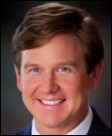

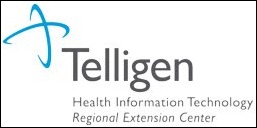




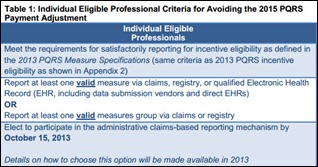

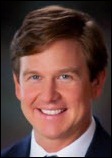
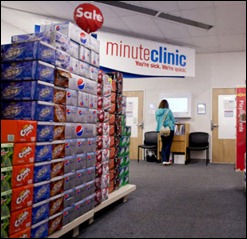


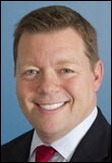
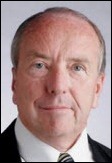
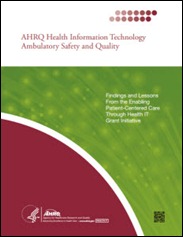
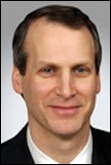

The article about Pediatric Associates in CA has a nugget with a potentially outsized impact: the implication that VFC vaccines…